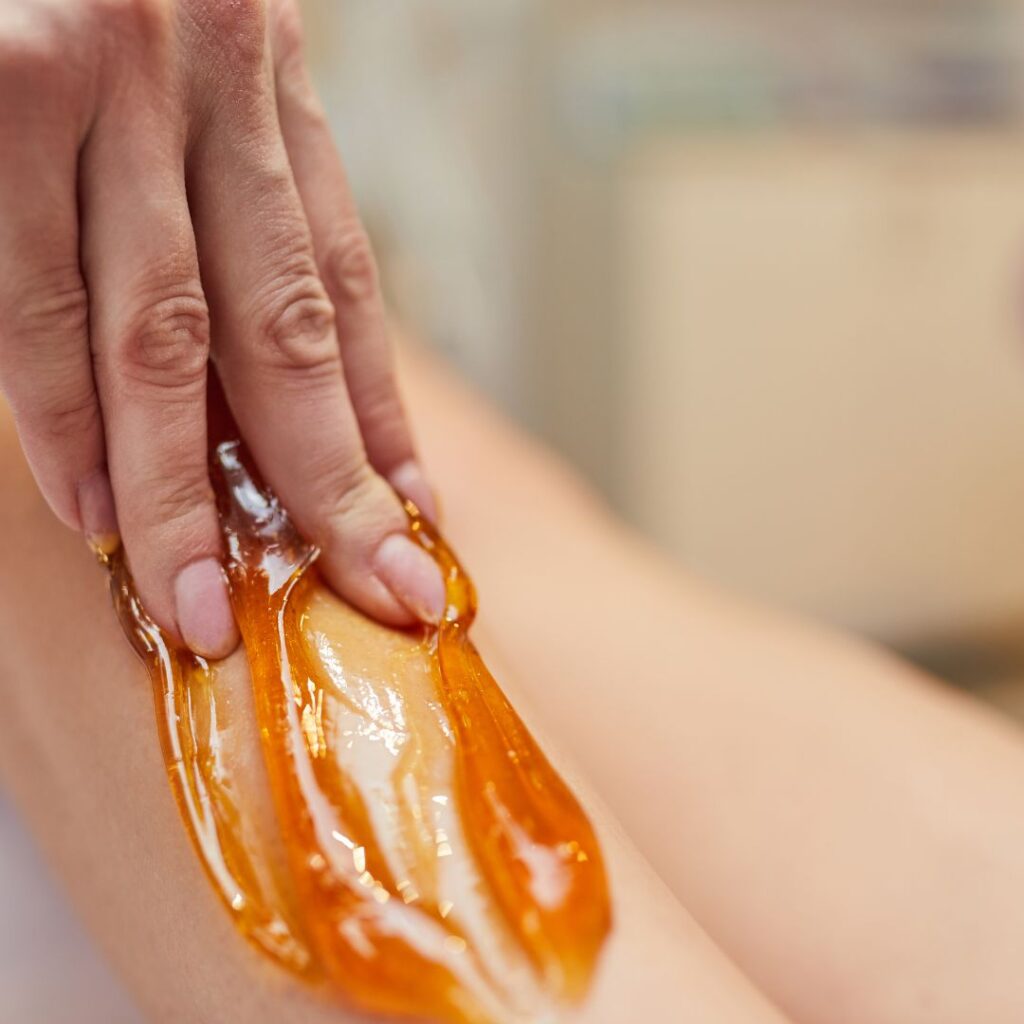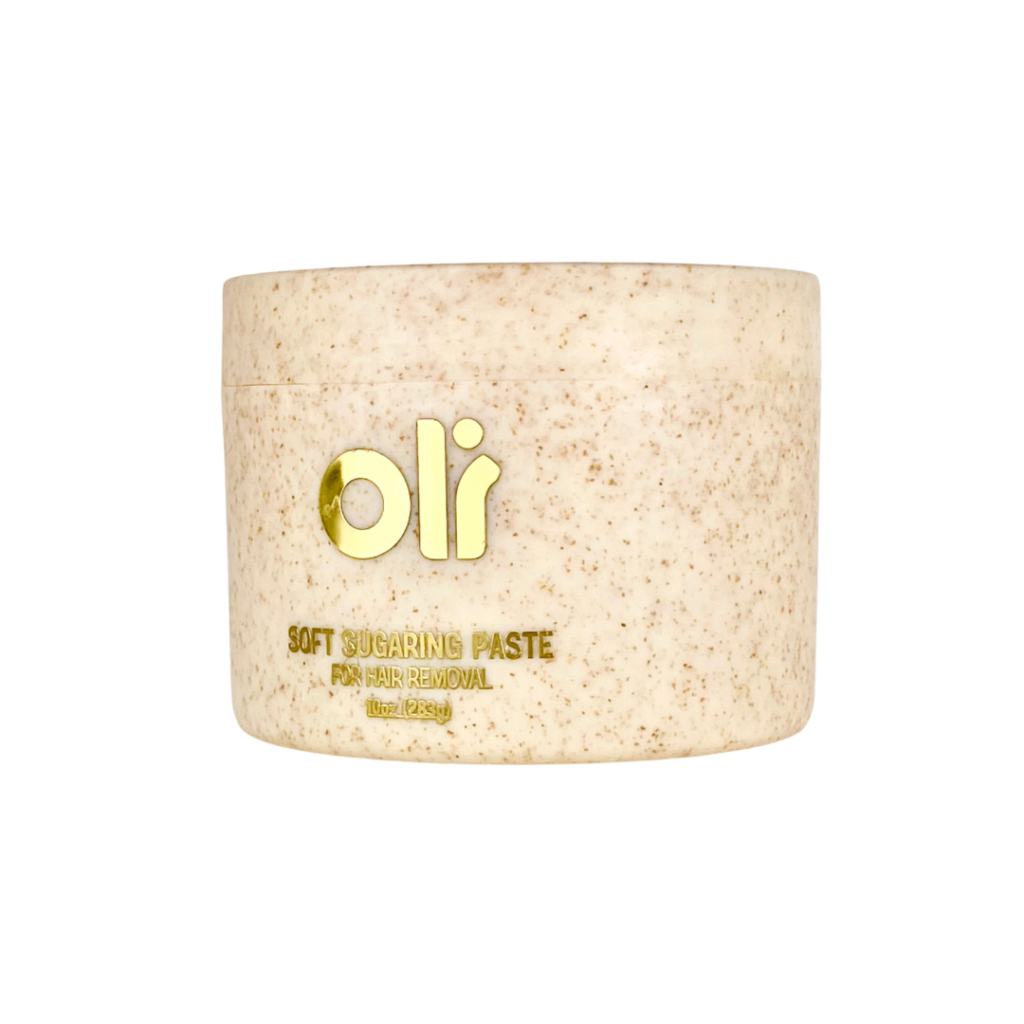
Sugar waxing, also known as sugaring is a natural hair removal method that has been practised for centuries. Made from simple ingredients: sugar, lemon juice and water, sugar wax is a gentler alternative to traditional waxing and can be easily done at home. However, to achieve smooth, long-lasting results, it’s important to follow specific steps before, during and after the waxing process. This article will guide you through the entire sugaring process, from preparation to aftercare, ensuring the best possible outcome.
Prepping Your Skin
Exfoliate:
One of the key steps to getting the best sugar waxing results is exfoliating your skin a day or two before the session. Use a gentle scrub or exfoliating glove to remove dead skin cells, which help prevent ingrown hairs and allows the sugar wax to adhere better to the hair.
Cleanse:
Before waxing, cleanse the skin thoroughly to remove oils, lotions or sweat that could interfere with the wax’s grip. Use a mild, non-comedogenic cleanser that won’t leave a residue on your skin.
Avoid Moisturisers:
On the day of your waxing session, skip applying any lotions or oils to the area you’re planning to wax. These can create a barrier that prevents the sugar wax from properly adhering to the hair.
Trim Hair:
For best results, your hair should be about 1/8 to 1/4 inch long. If your hair is longer, trim it down with scissors or trimmer to avoid unnecessary pain during the waxing process.
Application Tips
Choose the Right Consistency:
The consistency of your sugar wax is crucial. It should be pliable but not too runny. If it’s too soft, it might not remove the hair effectively; it too hard, it could be difficult to spread. You can adjust the consistency by reheating the wax slightly or cooling it in the refrigerator for a few minutes.
Apply Against the Hair Growth:
One of the unique aspects of sugaring is that you apply the wax against the direction of hair growth. This technique helps the wax grip the hair more effectively.
Pull With the Hair Growth:
When removing the wax, always pull in the direction of hair growth. This reduces the chances of hair breakage and helps prevent ingrown hairs. Hold the skin taut with one hand while quickly pulling the wax off with the other.
Work in Small Sections:
To ensure thorough hair removal, work in small sections. Applying the wax over a large area may result in uneven application and removal, leaving some hairs behind.
Avoiding Ingrown Hairs
Exfoliate Regularly:
Regular exfoliation is key to preventing ingrown hairs. After your wax, wait about 48 hours, then start exfoliating every two to three days to keep dead skin cells from clogging hair follicles.
Moisturise:
While it’s important not to moisturise immediately before waxing, moisturising afterward is crucial. Use lightweight, non-comedogenic moisturiser to keep the skin hydrated and prevent ingrown hairs.
Avoiding Tight Clothing:
Tight clothing can irritate freshly waxed skin and contribute to ingrown hairs. Opt for loose-fitting clothing, especially around the waxed area, for at least 24 hours after your session.
Aftercare Tips
Soother the Skin:
Immediately after waxing, apply a soothing gel, like aloe vera or witch hazel, to calm the skin and reduce redness or inflammation. Avoid products with alcohol or fragrances, as these can irritate the skin.
Avoid Heat and Sweat:
For the first 24-48 hours after waxing, avoid activities that make you sweat excessively, such as heavy exercise, saunas, or hot baths. Heat and sweat can irritate freshly waxed skin and lead to ingrown hairs or breakouts.
Stay Out of the Sun:
Freshly waxed skin is more sensitive to UV rays. Avoid direct sun exposure or tanning for at least 24-48 hours after waxing to prevent sunburn or hyperpigmentation.
Troubleshooting Common Issues
Sticky Residue:
If any wax residue remains on your skin, it can be easily removed with warm water since sugar wax is water-soluble. Gently wipe the area with a damp cloth until the residue is gone.
Missed Hairs:
If you notice some hairs were missed, avoid going over the same area too many times as this can irritate the skin. Instead, use tweezers to remove any remaining hairs or wait a few days before re-waxing.
Tacky Wax:
If you sugar wax becomes tacky and difficult to work with, it’s likely due to either overheating or exposure to too much moisture. Here’s how to handle it:
- Cool It Down: If the wax is too warm and has become sticky, allow it to cool slightly before trying again. You can also refrigerate the wax briefly to achieve the right consistency.
- Add a Dusting of Powder: Applying a small amount of OLI Sugar Dust Powder or cornstarch to the skin before waxing can absorb excess moisture, reducing tackiness and making the wax easier to manage.
- Adjust Consistency: If the wax remains too tacky despite cooling, try adding some firmer wax to adjust the consistency. Test a small amount to ensure it’s pliable but not sticky.
Breakouts:
If you experience breakouts after waxing, consider using a non-comedogenic treatment to prevent them. Always do a patch test before using new products on freshly waxed skin.
Conclusion
Sugar waxing is a gentle and effective way to remove unwanted hair, but achieving the best results requires proper preparation, technique, and aftercare. By following these guidelines, you can enjoy smooth, hair-free skin with minimal discomfort and long-lasting results. Remember, consistency is key – regular sugaring sessions will result in finer, sparser hair growth over time, making the process even easier and more effective.












